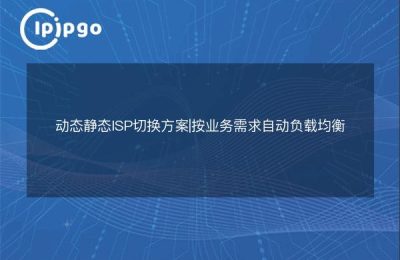
As we all know, with the rapid development of the Internet, network security issues are also becoming more and more serious. In order to protect the security of personal information and network accessibility, we often use proxy servers to hide their real IP address. However, the number of proxy servers on the market is often limited and slow, at this time, a static IP proxy can come in handy. In this article, we will explain in detail how to create an efficient and reliable static IP proxy.
1. understand the basic concepts of static IP addresses
Before we begin, we need to clarify what a static IP address is. A static IP address is an IP address that is fixed for a network connection and is not dynamically assigned to other devices. In contrast, a dynamic IP address is assigned and changed according to the needs of the network.
2. Purchase and configuration of servers
First, we need to buy a web host or a cloud server. Virtual hosts are relatively cheap and suitable for small-scale proxy servers; while cloud servers are more suitable for situations where a large number of concurrent requests need to be handled. After the purchase, log in to the server and complete the basic configuration, including the operating system and network environment settings.
3. Installation of proxy software
Next, we need to install proxy software to realize the IP proxy function. Currently there are many options on the market, such as the common Squid, Nginx and so on. Here we take Squid as an example for illustration.
First, we need to install the Squid software, which can be done through apt, yum and other package managers. After the installation is complete, you need to do some basic configuration of Squid, such as setting up listening ports, allowed access rules and so on.
4. Configure a static IP address
Normally, servers are assigned a dynamic IP address by default. However, in order to turn the server into a static IP proxy, we need to change the dynamic IP address to a fixed static IP address.
By editing the relevant configuration file on the server, we can fix the dynamic IP address. The specific operation method varies depending on the operating system version, please configure accordingly according to your actual situation.
5. Configuring fire protection
In order to protect the security of the server, we also need to configure firewalling to filter and restrict external requests. Common fire prevention software are iptables, firewalld, etc., according to their actual situation to choose the appropriate software.
By configuring firewall rules, we can restrict external access to the proxy server's ports and block malicious requests. This can effectively improve the security of the server from being attacked and abused.
6. Optimizing performance and stability
In order to ensure the performance and stability of the proxy server, we can take some optimization measures. For example, using caching technology to improve access speed, load balancing to share the pressure on the server, regular checking of server hardware and software, and so on.
To sum up, making a static IP proxy is not a particularly difficult thing to do, you just need to buy and configure the server, install the proxy software, configure the static IP address, set up fire protection, and optimize performance and stability. Of course, the production of proxies is only part of the solution, how to use and manage a good proxy server is equally important. I hope this article will help you to make an efficient and reliable static IP proxy.








